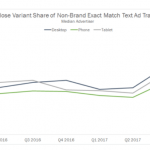Deathtech Rising: Mylestoned Unveils Interactive Memorial software

A startup trade around “deathtech” seems to be emerging. remaining fall, Xconomy was among the many first to discover new business tactics to demise in the digital age.
at the time, Boston serial entrepreneur Dave Balter used to be mum about what he was developing with one of the corporations we featured, Mylestoned. That changes as of late with the launch of the startup’s beta version of its provider that objectives to provide the grieving a extra meaningful and interactive approach of paying digital tribute to the dearly departed. (more on that in a minute.)
The seven-individual company, which CEO Balter integrated in January after leaving his position at Pluralsight, introduced it has raised $ 1.5 million in seed funding from Founder Collective, Boston Seed Capital (the place Balter is a undertaking partner), Converge challenge partners, and particular person traders.
the money gives Mylestoned an opportunity to see if it could achieve some early traction in its quest to “reframe loss of life in the course of the communal transformation and discovery of reminiscences,” as the corporate says in a press release saying its launch.
“we predict we’re on the forefront of a massive trade of how folks memorialize” the useless, Balter says.
Balter’s previous ventures include BzzAgent, a word-of-mouth marketing firm he based in 2001 and sold to Tesco subsidiary Dunnhumby a decade later for $ 60 million, and Smarterer, a talents-assessment firm began in 2010 and purchased 4 years later with the aid of Pluralsight for $ seventy five million.
A instrument company interested by demise would possibly look like an abrupt departure for Balter. however he studied psychology in college and says all of his companies “are actually in regards to the behaviors of people.” BzzAgent explored “the willingness of people to share their opinions.” Smarterer seemed at the “necessity of us to prove our abilities.” And now Mylestoned is inquisitive about “this great psychological desire to remain linked to those that have passed on,” he says.
“The psych degree is the muse for each curiosity i have about why individuals do what they do,” Balter says. “and that i need to solve that stuff. i love seeing how you can help individuals come to their very own conclusions and change their behaviors for the better.”
Balter has been obsessed with demise for months. The preliminary spark for Mylestoned came all over common flights to ny’s LaGuardia Airport, when he used to be constantly unable to identify a single dwelling particular person within the cemeteries that the plane passed over simply earlier than landing. the rationale, Balter has mentioned, is individuals are more “transient” these days, and it’s much less fashionable for them to reside near the cemetery the place their deceased household are buried or to mechanically seek advice from their graves. at the related time, more individuals are choosing cremation, in part, he argues, as a result of they need their lives honored otherwise—for example, via having their ashes scattered into the ocean.
His new company’s means is to build tool that makes it easier for folks to share and look at an enticing digital assortment of memories of the deceased. within the beta version of the product, customers can submit a “memory” by means of filling out a type on the corporate’s web site or through sending it via text message to Mylie, a software bot created by using Mylestoned the use of synthetic intelligence ways.
Balter gave me a sneak peek of the carrier last week. After texting “hi” to a host provided by means of Balter, Mylie replied and requested me to share a reminiscence i have of the late actor Leonard Nimoy. I responded with a short tribute to him. I gave Mylie my title and verified that i needed my memory shared on Nimoy’s “Mylestone”—the company’s term for each and every assortment of recollections. inside seconds the bot despatched me a URL the place I could view my homage, together with those that others have submitted.
the present version of the Mylestone is pretty naked bones, Balter admits. It has a sleek design, but it’s principally simply quick snippets of text. “Our roadmap has a long listing of things to be able to turn this into a much more dynamic structure,” he says.
as a way to embrace augmenting the textual content with photographs, movies, audio, and other features, Balter says. for instance, if any person submits a memory about the deceased particular person’s love of football, Mylestoned will be capable of embed images of soccer within the story in real-time. If users would prefer importing their very own photos of the deceased playing football, say, they could try this. “we can make this related to some degree, and allow the user to construct on that with their own content,” Balter says.
One audience is loved ones and buddies of the deceased—folks in the “second ring of grief” out of doors of the speedy domestic—who could create a Mylestone as a gift to the family, Balter says.
the company remains to be figuring out how it is going to generate earnings, but Balter says some possibilities could embrace a price to handle a Mylestone after a certain period of time has handed because a family member’s loss of life (a year, say), and most likely charging people if their publish in regards to the deceased exceeds a undeniable size.
still, choosing the proper business version for a startup is difficult, and it’s an much more delicate decision in deathtech, provided that clients are experiencing some of the most making an attempt and emotional moments of their lives.
“We do believe strongly that things round dying and recollections, we’d choose to place as few hurdles in location as imaginable to let people have the expertise in the time of grief,” Balter says. “the last thing you wish to have is [to say], ‘howdy, would you love to claim some excellent things to this individual as a gift to the domestic? Slide your bank card here.’”
the general public conversation round demise does seem to be altering. Some indicators Balter points to: “death cafes,” which are gatherings held around the world the place folks (incessantly strangers) eat cake, drink tea, and speak about dying; and a “demise sure” motion began by way of The Order of the nice loss of life, a gaggle of funeral industry professionals, lecturers, and artists looking to “prepare a death-phobic tradition for their inevitable mortality.” The workforce has accumulated tons of of signatures from individuals expressing their intentions to talk more brazenly about demise.
at the similar time, people are trying to find new methods “to celebrate the spirits of their loved ones,” Balter says.
The timing may well be right for Mylestoned, says David Chang, a Boston entrepreneur and investor, and PayPal Media network’s former chief working officer. (Chang is just not a Mylestoned investor and isn’t concerned with the company.)
“i think it’s too early to [say] whether there will likely be a whole business of [deathtech] products and services, or just the emergence of narrowly centered apps that handle particular use instances,” Chang says in an email message. “i suspect we’ll see a couple of completely different services launch on this trade prior to they merge/consolidate with each and every different or get bought by way of incumbents.”
There are already lots of web sites that permit individuals to pay tribute to the lifeless thru text, pictures, videos, and so on. And social media platforms like facebook have additionally grow to be in style methods of memorializing the lifeless online.
but Balter thinks these choices depart lots to be preferred. now not everyone has a fb account, so making that the primary automobile for on-line tribute routinely leaves out some family and pals. And the “likes, emojis, and smartly-intentioned comments” of social media can “trivialize meaningful memorialization and may every now and then lead to awkward interactions,” Mylestoned says within the press unencumber.
in the meantime, Balter sees current web pages dedicated to memorializing the lifeless as “one-dimensional” and essentially simply taking the standard funeral-home comments guide and shifting it on-line. “We haven’t taken that to the purpose of enabling the spirits of these family members to be around us now and then that matter,” Balter says.
Mylestoned intends to make that that you can imagine in future variations of its tool by using enabling the recollection of recollections in accordance with triggers like dates, occasions, and visiting sure places. (the concept that is just like what SafeBeyond, another deathtech company, has built.) for example, on favourite vacations or the anniversary of a loved one’s passing, Mylestoned might send a notification to members of the family and pals that “there’s a gift waiting for you, which is a collection of recollections” they may be able to view, Balter says.
every other instance of a set off would be a spot that held that means to the deceased particular person, perhaps a favorite restaurant. When someone within the person’s “internet of recollections” visits that spot, Mylestoned might serve up digital recollections people had shared concerning the deceased’s experiences at that place, Balter says. the idea is for Mylestoned to be greater than an online repository of memories, but to add “relevance” and “discoverability” of issues people might not be aware of in regards to the dearly departed.
Balter also means that Mylestoned might in the future incorporate augmented and digital reality technologies, which can be nonetheless in early levels of construction and adoption. “nowadays, [the format] could also be a web page. In two decades, it may well be AR/VR.”
Balter and his crew are taking a wise manner in the early going with the aid of starting with a “tight center of attention” on a small number of features, Chang says.
“I additionally think Mylestoned is placed well,” Chang says, “on the way it’s leveraging its goal user base: low barrier to get the ball rolling, relying on a number of stimulated individuals to seed the content material, then enabling a broader target market to devour the content material and supply sure comments/cycle to motivate extra adoption.”
Mylestoned’s primary challenge, Chang says, might be “determining how so much to leverage present incumbent content material sources (e.g., facebook) to jumpstart adoption and develop their own consumer base.”
“they can either create a destination web site/app and require their users to create content from scratch, or take a thin layer way the place they sew together media that already exists,” Chang says. “each methods can work, but have very completely different pros and cons.”
not directly, Mylestoned might be useful now not simplest to people who knew the deceased individually, but additionally people who didn’t, including those born after the person is long gone. “which you could think about a future where every single deceased person has virtually a personality or a set of reminiscences so someone can discover who they have been,” Balter says.
“The goal is to create this tapestry of people and who they had been and the affect they’d on the arena,” he continues. “You don’t have to only chisel any person’s title in granite and put them in a cemetery and hope to move there to needless to say them. it may be existing all around you.”
(40)













